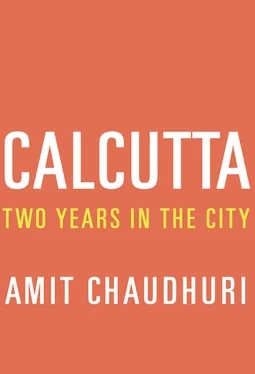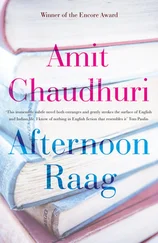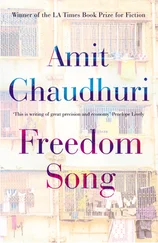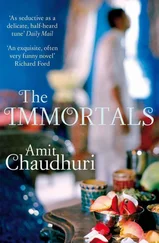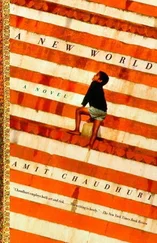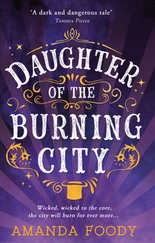Globalisation first made its presence palpable in Calcutta in the nineties with gated clusters of buildings which had peculiar names like Hiland Park and South City and Merlin. Some of them rose rapidly; others, caught in some legal tangle or other, took years to complete. These gated buildings had, or were meant to have, their own gymnasiums, swimming pools, and recreational clubs — sometimes even their own schools, Jacuzzis, shops, and cinema multiplexes. In contrast to their near-nonsensical names, names at which you could neither laugh nor rage, but register as a mark of a puzzling shift of mood — in contrast to these names, their messages to the potential buyer were solemn and ingratiating. For example, Hiland Sapphire, an ongoing part of the Hiland Park project on Ballygunge Park Road, almost next door to where I live, gravely informs (mostly expatriate) customers: “A symbol of sophistication, a mark of dignity, Hiland Sapphire certainly is the residence of choice for the manor born.” By becoming a microcosm, by being self-sufficient, they fulfil a fantasy that many Calcuttans have secretly had for years: to live in the city without in any way depending on it, or being beholden to it, or subject to its vagaries.
In the meanwhile, two new hotels came up near Salt Lake, a suburban development that, by now, was beginning to feel derelict — came up without too much explanation, the ITC Sonar Bangla and the Hyatt, on stretches of wilderness that had no past, overlooking the EM Bypass. Who would stay in them? Surely business was going to be disappointing? The answer was — they were coming up as part of a larger wave. Calcutta was changing, was going to change, and the hotels would be there, prepared to participate and contribute when the change came.
On some such foresight was built New Town in Rajarhat, about twenty minutes away from the Hyatt, emerging on flat expanses of horizon and land on which the sun had been setting and rising without anyone taking note, except for straggly peasant families who could now be pushed aside with impunity, or appropriated as labour for the planned offices and residential tower blocks. The new IBM office compound was demarcated here. It appeared, for a while, that Rajarhat might spawn a Bangalore, a city geared towards the future. Then, one day, it felt like Rajarhat’s plans — like Calcutta-Kolkata’s — had been arrested midway, abandoned in a moment of despair and indecision. There’s a long highway cutting, in a series of right turns, through Rajarhat to the airport, and people take it as an alternative to the old route via VIP Road, to avoid the slow-motion bazaar-like stoppages on the way, at outposts like Ultadanga and Baguihati. (I should add that this “old route” is itself a “new route,” and I remember well the older route to the airport through Manecktala in the early seventies, when, in the aftermath of the Naxal agitation, to be spotted in an Ambassador car was still a sign of bourgeois hubris, and a dangerous provocation to the crowd.) I probably first took the Rajarhat detour to the airport one dawn five years ago, and felt oppressed: because I’m always intimidated by silence and emptiness, and hadn’t realised there was so much of them to be found on this journey. That year, the buildings and offices began to rise in a spurt of brashness and colour, and with the swagger of liberalisation — a swagger that, like a card sharp’s bravado, promises it can pull off any trick, and does. It’s the swagger that produced the township of Gurgaon on the outskirts of Delhi. But from 2008 onward, I began to feel on my airport journeys that the project had been hastily set aside: that new buildings were coming up, but the card sharp had made an exit. Rajarhat was now a frozen city, nascent, like one of those unfortunate kingdoms in children’s stories where everything is pretty and spotless, but has a dread spell cast over it.
I encountered this weird enchantment — the fairy-tale stillness of a globalisation that has no real resources — when my wife and I visited Pan Asia a third time, surreptitiously. It was afternoon; the glass doors were locked.
Was it a public holiday? (Within, the shadowy outlines of waiters lurked aimlessly. We stood like Hansel and Gretel, with nothing to fear really, only having to cope with a vague bourgeois deflation, a feeling of thwarted entitlement, at the end of our trek.) From Pan Asia — still, then, maybe the city’s most discussed Oriental restaurant — we retreated in consternation, as from an illusion or a mirage, and were informed apologetically that all but two of the ITC Sonar Bangla’s dining places remained shut for lunch except on Saturdays and Sundays. There just weren’t enough customers to justify a daytime opening; so Pan Asia remained out of bounds, secret and semi-dark. Tellingly, the Sonar Bangla’s customers didn’t notice; they made robustly for the buffet at the coffee shop.
This inactivity at Pan Asia wasn’t emblematic; it felt accidental. No matter that industry and investment were failing to arrive in the city as they’d once, in the early 2000s, been expected to; new luxury hotels were planned regardless (as I write this, a new Marriott and a second Taj, to be erected near the Ruby General Hospital, are rumoured), like a transformation compelled to march into existence to a faraway drumbeat. So it was with residential buildings in general, even well after the crash of 2008, a setback which signified neither one thing nor the other to Calcutta — the gated enclaves kept coming up and multiplying, as did tall clusters of apartment blocks, fancifully renamed condominiums or “condos” for the Bengali buyer from New Jersey. On the ragged highway of the EM Bypass, and sometimes in the centre of the city, hovering over, say, a resistant traffic snarl on Camac Street, billboards promising the bucolic spaciousness, birdcall, and organic delights of new property rivalled the ubiquitous and conventional advertisements for gold jewellery and fairness creams. Among the stellar faces addressing the crowd- and traffic-entangled sojourner from those hoardings was the gifted actress Konkona Sen Sharma, looking unlike her usual self, and the tabla maestro Bickram Ghosh, as adept at playing complex time-signatures on his cheeks as upon his instrument, and his wife, the beautiful Tollywood star Jaya Seal. Bickram Ghosh, in particular, bearded, with the alchemic air of a wizard (he is, not to forget, a genuine tabla wizard), proliferates everywhere, presiding over the city’s contradictions, its slightly inebriated, expanding property prices, and its ambiguous prospects, and, with his wife, smiles inclusively, without noticeable condescension, from a huge billboard near the Sonar Bangla, seeming to hold the key to the hope, the obduracy, and the curious fantasy of living in Calcutta.
To be asked to promote a new building is a peculiar accolade. Soon after I’d moved to this city in 1999, I was approached by someone representing a builder who asked me if I’d act as a presenter for a video meant for prospective buyers of flats in an already well-publicised development. To help me overcome my resistance, this man told me that the last presenter for one of their new and coveted apartment blocks had been Victor Banerjee, familiar to international Anglophone audiences for playing Dr. Aziz in David Lean’s fervid interpretation of A Passage to India . Victor (who is a friend) was, by now, a Bengali icon and a mascot and badge of honour for anyone who had anything to do with him in Calcutta. Once I’d disguised my embarrassment (after receiving the vituperative review in the Statesman on arriving here, I was steeled for any kind of interaction), I didn’t have the gumption to say “Yes” to the man on the telephone. Instead of an outright “No,” I quoted a fee more appropriate to Shah Rukh Khan than one who writes my kind of fiction. “I’ll get back to you,” said the man; but didn’t.
Читать дальше
